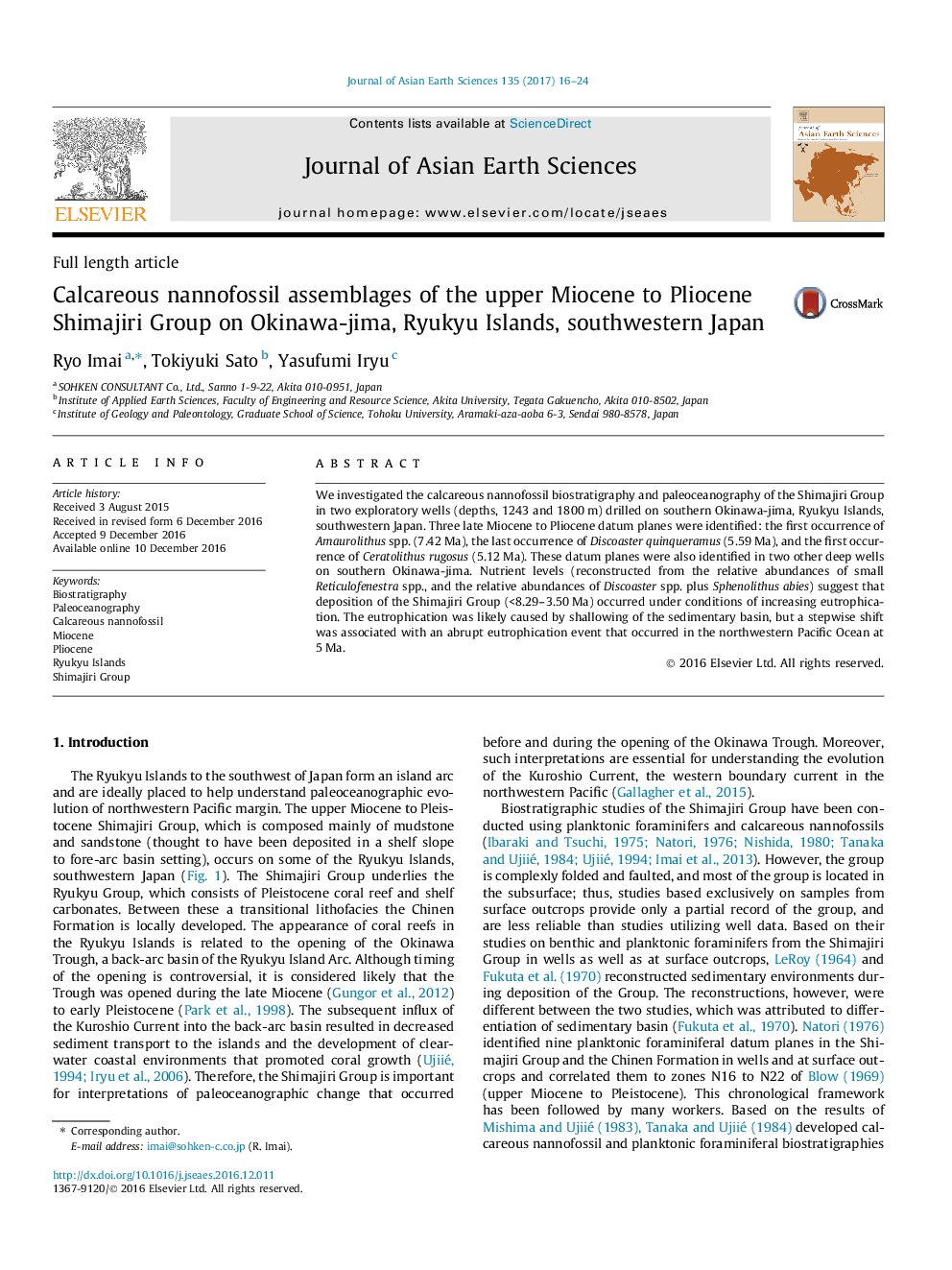| Article ID | Journal | Published Year | Pages | File Type |
|---|---|---|---|---|
| 5786099 | Journal of Asian Earth Sciences | 2017 | 9 Pages |
Abstract
We investigated the calcareous nannofossil biostratigraphy and paleoceanography of the Shimajiri Group in two exploratory wells (depths, 1243 and 1800Â m) drilled on southern Okinawa-jima, Ryukyu Islands, southwestern Japan. Three late Miocene to Pliocene datum planes were identified: the first occurrence of Amaurolithus spp. (7.42Â Ma), the last occurrence of Discoaster quinqueramus (5.59Â Ma), and the first occurrence of Ceratolithus rugosus (5.12Â Ma). These datum planes were also identified in two other deep wells on southern Okinawa-jima. Nutrient levels (reconstructed from the relative abundances of small Reticulofenestra spp., and the relative abundances of Discoaster spp. plus Sphenolithus abies) suggest that deposition of the Shimajiri Group (<8.29-3.50Â Ma) occurred under conditions of increasing eutrophication. The eutrophication was likely caused by shallowing of the sedimentary basin, but a stepwise shift was associated with an abrupt eutrophication event that occurred in the northwestern Pacific Ocean at 5Â Ma.
Related Topics
Physical Sciences and Engineering
Earth and Planetary Sciences
Geology
Authors
Ryo Imai, Tokiyuki Sato, Yasufumi Iryu,
